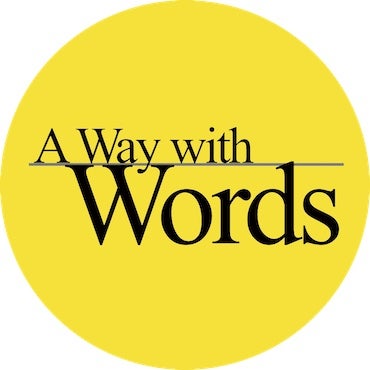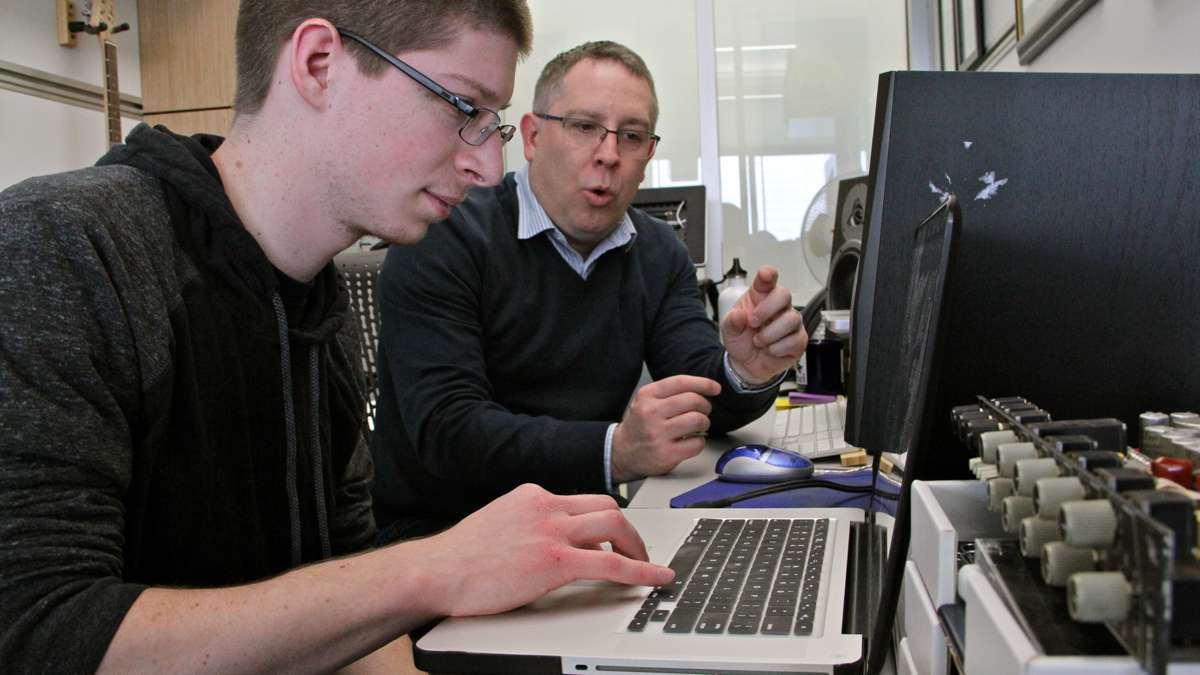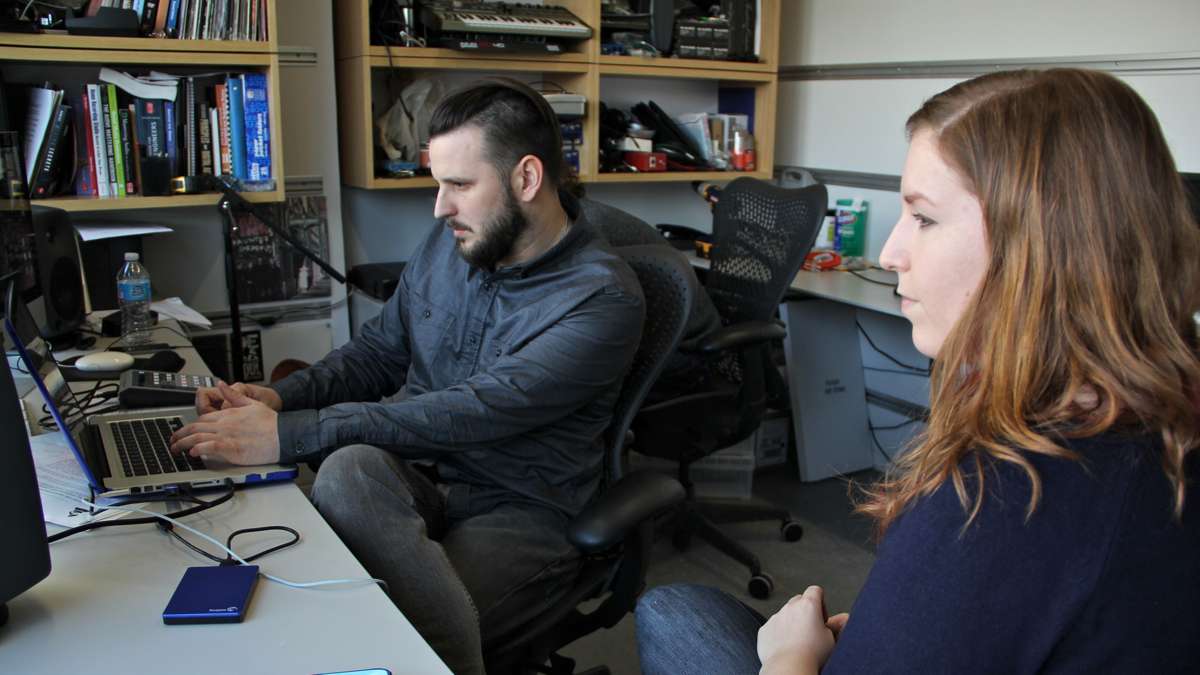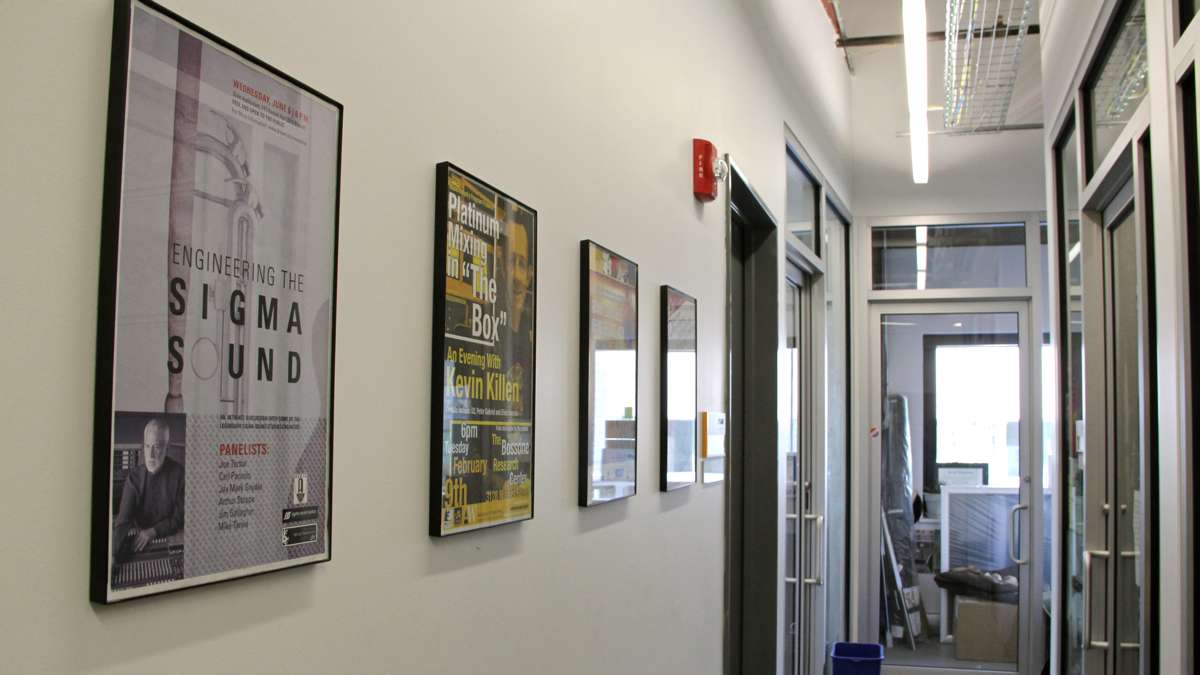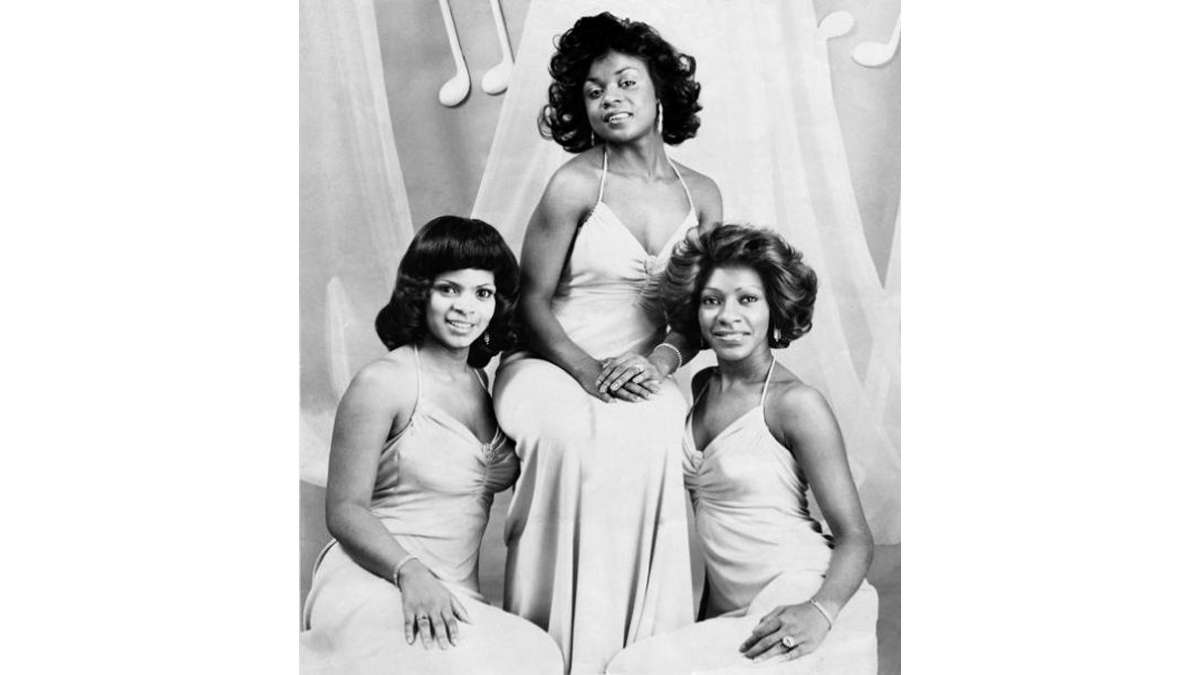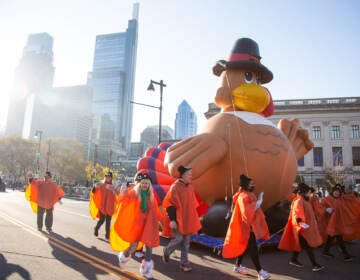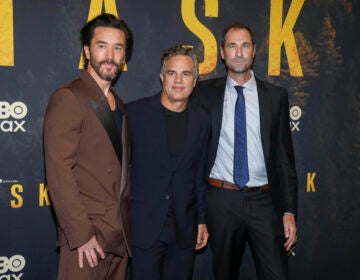Drexel students bring modern mixes to archive of funky recordings
Listen“It’s funky. It’s just fun. I don’t know …It’s cool,” said Jake Keenan, a sophomore at Drexel University taking a stab at mixing funk tracks laid down 20 years before he was born. “It’s not really in my realm.”
Keenan is part of an independent study project at Drexel’s Music Industry program who are mixing some of Philadelphia’s forgotten funk. Multi-track recordings from studio sessions in 1974 were shelved before they could be mixed and released. Now students raised on indie rock and electronic pop of the 21st century are trying to make sense of the tapes.
Philadelphia Groove Records was a small independent label from the late 1960s to early 1970s that had its first and biggest hit with the Delfonics, “La La Means I Love You.” In 1974 was grooming a handful of artist to become its next roster of hitmakers, but suddenly folded. All their unused tapes from recording sessions were held by the recording studio, Sigma Sound.
That roster included little-known artists like Terry Collins, the Nat Turner Rebellion, and the Sound Experience, names recognizable only to serious collectors of vinyl 45 singles.
“It’s a great catalogue of stuff,” said Toby Seay, associate professor in the music industry program at Drexel University. “Why wasn’t it a hit? Because it didn’t have a major label machine? A lot of this stuff is fantastic.”
In 2003, Sigma Sound sold its studio on 12th Street in Philadelphia. All the unclaimed tapes went into Drexel’s audio archive. Recently a music publishing company called Reservoir bought the rights to all of Philly Groove Records music, with hopes of marketing them for commercial purposes and, if possible, as re-releases.
The problem is executives at Reservoir could not hear some of the music, because the multi-track recordings were never mixed down to a single, listenable track.
“And then this idea came up,” said Seay. “There’s these unfinished tracks, and we have students we can put on this, so at least we have listenable material. It will allow Reservoir to use them for marketing purposes. If all goes well and we get good mixes, we’ll have release-able material.”
Seay, a music archivist, has never seen any releases, on any label, by a band called The I-Band, but he found a handful of session tapes by them, including a wicked funk number called “Lone Ranger.” It’s one of the 16 tracks chosen for the project.
Terry Collins’ “Actions Speak Louder Than Words” had been released as a 45 single on a different label, but as far as Seay can find it was never released on an album or compilation CD.
“I mean, here’s a guy who had a huge voice, beautiful production, sounds like Teddy Pendergrass, and he’s not a household name,” said Saey.
A band called the Nat Turner Rebellion played a more aggressive funk with political lyrics. It was started by brothers Joe Jefferson and Major Harris (who would go onto a solo career with a major hit, “Love Won’t Let Me Wait”). The band got it’s name from a Virginia slave rebellion in 1831, and wrote songs like “Tribute to a Slave.” The band may have been involved with the Black Power movement.
Seay found unreleased recordings of “Right On, We’re Back” in the archives, which he passed onto his students to mix.
Seay discovered enough unmixed material by an obscure band called the Sound Experience, from Baltimore, which had a CD re-release 20 years ago. He gave his students two tracks to play with: “Blow Your Mind” and “It’s a Funky Thing.”
The song was mixed by Keenan, the 19-year-old sophomore, who says his dad raised him on Earth, Wind, and Fire records. “I DJ, and play 70s and 80s stuff, but I am strictly an electronic producer. I never do live [acoustic] stuff. I don’t really do this.”
Philly Groove Records, like its more famous rival Philadelphia International Records, shaped the so-called “Philadelphia Sound” with lush horns and strings, and funky rhythm sections (think “For the Love of Money” by the Ojay’s). Keenan and his fellow students know next to nothing about mixing complicated horn sections, or how to pair it with a soulful crooning voice without drowning anything out.
“That horn section, it literally sounds like a football game,” said Keenan of the opening blast from “It’s a Funky Thing.”
The rules of the class were simple: Mixers could not introduce anything that is not already on the tapes. So – no Moby-style electronic sampling or revisionist club mixes. However, they could sweeten the tracks however they wished with reverbs, compressions, and delays.
The songs would doubtlessly have been mixed with those kinds of effects back in 1974, with limitations. Modern digital technology allows hundreds of varieties of a reverb not available then.
“They will try to be modern. Sometimes it works, sometimes it doesn’t,” said Seay. “If they try to stay vintage, they don’t have that context. I tell them, don’t feel like you have to place this in a box. Go where it needs to go.”
Seay, and Reservoir, are excited to hear how these young ears shape these old funk tracks. They won’t sound vintage, they won’t sound modern, but something entirely funky.
WHYY is your source for fact-based, in-depth journalism and information. As a nonprofit organization, we rely on financial support from readers like you. Please give today.

